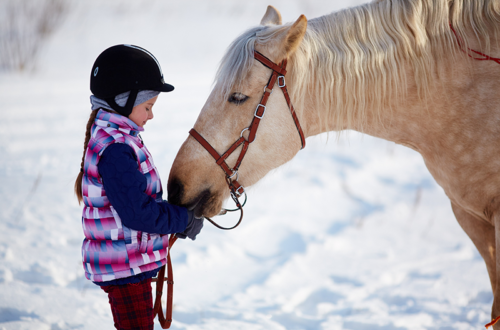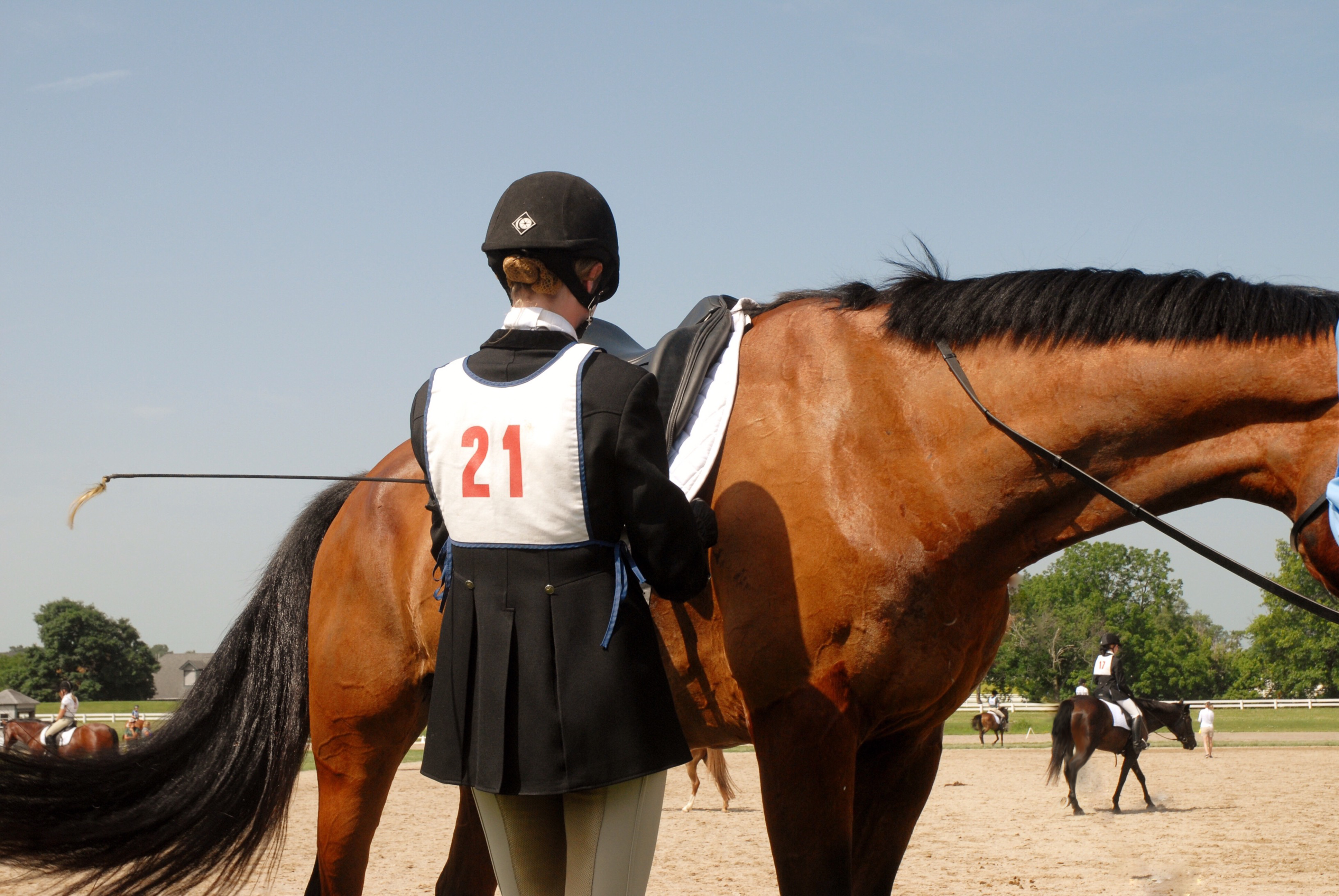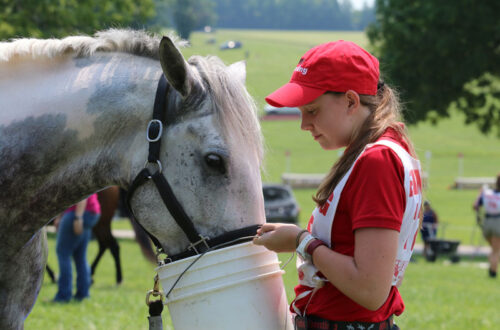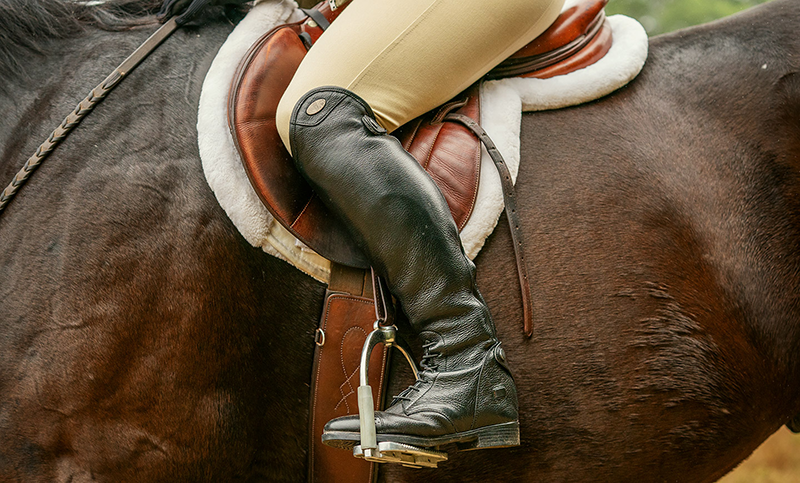
Show-Stopping Biosecurity: A Horse Show Veterinarian’s Personal Experiences
Prevention is priority when thinking about biosecurity at a horse show, and at a home barn.
By Holly J Helbig, DVM, Equine Technical Services, Zoetis
From the other side of the kitchen, I watched as my husband’s bare hands touched his kid’s germ-ified lunch box and, in the same swift motion, reached for the charcuterie board to help himself to salami slices and Manchego cheese, his favorite. I gave him a strong, horrified look. We had good friends over for dinner, a spread of hors d’œuvres and a charcuterie board where each item had its own designated serving utensil.
My germy, bare-handed husband quickly defended himself. “What is it, hon? I just washed my hands!” He then proceeded to explain to our friends that before the pandemic, he never really washed his hands … maybe once in a while. It’s only when the Centers for Disease Control and Prevention (CDC) urged us to handwash frequently that he realized he had to pay attention. As an equine sports medicine veterinarian who has had to manage her fair share of horse show outbreaks, I jokingly couldn’t believe I married this man.
Washing hands should, in my humble opinion, be a part of wedding vows: “For richer, for poorer, in sickness and in health, to love and to cherish, to wash my hands frequently, till death do us part.” This exchange took the group back to the early pandemic days. Several of us confessed that we have become germophobes to a degree since the onset of Covid-19. Don’t we all have a bit of germ trauma lingering from those unprecedented times? I couldn’t help but connect the dots to equine biosecurity and the protocols we adhere to in order to do our absolute best to protect the horses we know and love, too.
The Need to Rethink Potential Impact
No one around the world grasped just how large the impact that Covid-19 would have. Beyond the enormous human and economic impact, the pandemic exposed the weaknesses of organizations and an overall lack of preparedness. The virus inflicted carnage across the world, as did equine influenza virus (EIV) at a large horse show at which I was officiating a few years prior. Currently, outbreaks of more devastating equine diseases, such as equine herpesvirus, equine herpes myeloencephalitis, and strangles continue to populate our newsfeeds and social media. In the future, the equine community may be confronted with other viruses whose combination of virulence, transmissibility, and other characteristics pose an even greater danger.
Prevention is Our Priority
Given how difficult it is to stop the spread of certain infectious diseases, prevention needs to be the top priority. It often involves common-sense things we learned as kids, and similar protocols apply to our horses. Wash your hands, don’t share dirty Kleenex (rags in the horse world), keep your stuff clean, and stay home when you aren’t feeling well. I’ve actually had clients bring sick horses to shows to be examined because they couldn’t get a veterinarian at their farm the morning before they left. Imagine sending your child to school with a fever to see the school nurse!
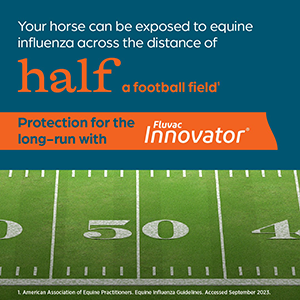
I often remind clients that their horses are particularly vulnerable at shows, races, and events, emphasizing a two-week quarantine for new horses welcomed at barns and after transport with horses outside their normal population. But how often does this happen? As a barn owner, I know I’m guilty of committing this crime. It’s additional work when so many operations are already short-staffed. How do we do a better job of emphasizing and educating on the importance of preventive measures?
Frankly, my firsthand experience with the EIV outbreak at the horse show absolutely changed the tone with which I discuss preventive measures with clients. I have a lot more urgency in my voice these days. One gift the pandemic gave us was a heightened awareness around contagious disease. It’s crucial for every barn owner to work in collaboration with their veterinarian to have a biosecurity plan in place. Did you know your veterinarian can even help review your facility and make recommendations?
As I considered the “not-fun factor” of an outbreak, one fun fact I loved sharing during this particular EIV outbreak was, “Did you know a horse can sneeze and shed a virus reaching half the length of a football field?”1 That’s 50 yards (150 feet), according to the Equine Disease Communication Center (EDCC).
Let’s not wait to prioritize biosecurity measures until it’s too late. Let’s focus on prevention first.
Trust the Science and Vaccinate
Routine preventive care and vaccination is critical for all horses at all stages of life. No matter if your horse travels, lives at a facility where others travel or is simply exposed to other horses across the fence line, the end game is the same—a healthy, happy, and protected equine friend.
Although vaccinating doesn’t guarantee prevention of disease, science has shown that it significantly reduces the risk of clinical signs as well as the duration of disease. The American Association of Equine Practitioners (AAEP) divides diseases into core and risk-based. Core diseases are those that are endemic (native to a particular area), pose risk of significant harm for a horse, and are potentially significant to public health. Core diseases include Eastern equine encephalomyelitis, Western equine encephalomyelitis, tetanus, rabies, and West Nile virus. There is only one approved vaccine for horses that covers all five core diseases in a single injection. Risk-based vaccines that target diseases such as equine rhinopneumonitis (EHV-4/1) and EIV are often chosen based on the nature of commingling, travel, and geographic location. Because respiratory viruses are the most common risk-based viruses, most organizations overseeing performance horse events require horses to be vaccinated for EHV-4/1 and EIV every 6 months.
Improving Biosecurity at a Horse Show Through Heightened Communication
The transmission of information is essential for effective outcomes. The governing bodies regulating horse shows and large equine events, along with the veterinarians involved, need to have an action plan in place before potential biosecurity events occur.
On the management side, show owners may not want to lose entry money or make it publicly known that there may be a biosecurity threat at their show. It’s not good for business. Trainers and owners may be hesitant to inform others of their sick horses out of fear that they’ll be blamed as the source of disease transmission. Many febrile horses are treated by trainers, sometimes for days before getting a veterinarian involved. Veterinarians may feel obligated to protect their clients and have a mindset that if a horse is already shedding a virus, he’s already shed to neighboring horses at this point. All these mindsets are a recipe for disaster.
All personnel in the equine community have a duty to communicate with one another about potential infectious diseases, especially at large equine gatherings. A simple phone call to your veterinarian when your horse is ill or shows signs of illness could provide valuable information that may decrease the magnitude of an outbreak.
Sometimes I think we don’t give our little horse world enough credit. I saw firsthand a quick moment of panic followed by a huge support network around the outbreak. We weathered the storm together. Let’s applaud the horse show for releasing a public statement and being forthcoming. Let’s applaud the staff who rallied together to create a safe and healthy quarantine. Let’s create a mindset that applauds individuals for openly communicating and proactively working to contain outbreaks.
Speaking of communication, those of you who travel frequently with your horse may want to consider taking advantage of a wonderful resource available online. The EDCC’s sole purpose is to track equine outbreaks and improve the welfare of horses by communicating real-time alerts across the country. Click on their link above to sign up for notifications.
Horses That Travel: Spread the Word, Not the Disease
Most horse owners travel with their horses at some point during the year. After all, most horses are part of the family, and for equestrian enthusiasts, some of the best vacations are spent at events accompanied by their horse. The following recommendations are simple biosecurity guidelines intended to help minimize risks:
- Be up to date on all core and risk-based vaccinations.
- Provide proof of a negative Coggins test within the last year (6 months for some states/events).
- Have a current certificate of veterinary inspection, required for interstate travel.
- Ask your veterinarian to run a stall-side test to assess whether there are no early indicators of infection (before and after the show).
- Ensure manure is removed and the stall is cleaned and disinfected prior to unloading your horse from his trailer to enter the show barn.
- Take your horse’s temperature upon arrival at an event, twice daily during an event, and at departure.
- Do not share tack, cleaning supplies, or grooming equipment.
- Minimize nose-to-nose contact, including avoiding sharing rags to wipe horses’ faces.
- Isolate your horse for two to three weeks when returning from an event, and monitor for any signs of disease.
- If a horse is coming from a previously infected farm or event, a nasopharyngeal swab and culture may be warranted.
- Communicate with your veterinarian if your horse shows any signs of infectious disease or if other horses at the event are reported febrile (having a fever).
In the Face of an Outbreak
Shut down a horse show or training barn for a week? Wait, what?!
If you suspect any infectious diseases at your farm, contact your veterinarian immediately. They will be able to run appropriate tests, render treatment, and make recommendations about isolation. Veterinarians often refer to the AAEP’s extensive and resourceful biosecurity guidelines. Everything you need to know about equine biosecurity is included here. Many governing bodies of horse events, such as the International Equestrian Federation (FEI), United States Equestrian Federation (USEF), American Quarter Horse Association (AQHA), and Horseracing Integrity and Safety Authority (HISA) also offer informative guidelines on biosecurity.
Sometimes biosecurity measures at a horse show and at home barns get neglected. We underestimate the potential impact to our horses’ health, along with the economic impacts to owners and the industry. The necessary measures will continue to require leadership, time, education, routine preventive care and public awareness.
References
- American Association of Equine Practitioners. Equine influenza guidelines. Disease Factsheet_EquineInfluenza_FINAL-Cobranded.pdf (aaep.org). Accessed September 15, 2023.
- Dilai, M, et al., Vet Microbiol, 2018 (v1.0). Serological investigation of racehorse vaccination against equine influenza in Morocco. Veterinary Microbiology. 223. 2018. 153-159.
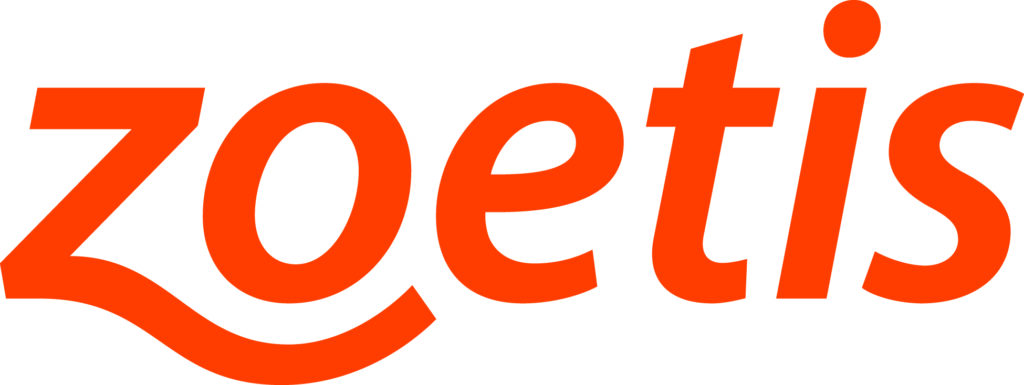
About Zoetis— Official USPC Equine Health and Wellness Partner
To learn more about how Zoetis is making lives better for horses and those who care for them, visit zoetisequine.com and Zoetis Equine on Facebook and Instagram.



